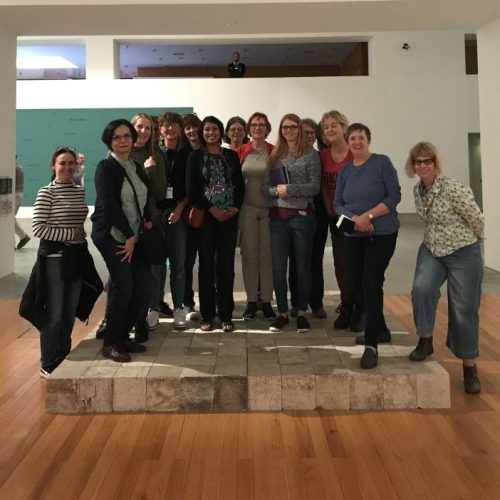
OCA study trip 2020 to Lisbon, tutors’ review.
The first Lisbon trip for OCA students
By Michele Whiting & Diana Ali
One year earlier…
Last year both Michele and Diana were working in Lisbon, Michele has a long relationship with Portugal and Lisbon in particular and works there from time to time, including a residency undertaken at PADA (see below) late last summer, and Diana enjoyed the city and living in and amongst it for the duration of the shows that she was curating.
So, the planning of the 2020 study trip really started as a conversation last summer when we met up in Lisbon, it started as ‘wouldn’t it be great for our students to experience this place’ and then the thought that maybe we could plan and arrange something. We started to write the proposal after researching various aspects from galleries to artists projects and independent spaces, to see what would be best for a mixed level group of cross disciplinary students. Further planning was undertaken in the winter to sure up the learning opportunities and book tours and guides in the galleries that had been scoped out, plus a site visit to the hotel, Casa das Historias and some travel and visits around sites in Lisbon for sketchbooking and opportunities to discover.

We co-wrote the proposal and once accepted by OCA, it was time to get to work. An itinerary was created which had many drafts because we wanted to incorporate many activities, gallery talks and tours, cultural site seeing, sketchbook walks, debates and discussions for a range of students. 13 students signed up from Foundation to Level 3 spanning drawing, painting, illustration, textiles and fine art. We made prior bookings for gallery tours, did administration of students, emergency contacts, staff ID cards, virtual dialogues were set up between the tutors and students through Padlet and WhatsApp, and social media set up- all ready to provide pre-reading and research, to document during the visit and for reflections after it.
Preparation- 2 days before
We arrived a couple of days before the study trip started so we could plan the walks that we had in mind and book communal dinners in less touristic hot spots so that our students had time to relax and enjoy being with their peers- which is a vital part of this form of trip. Importantly as well it gave us time as tutors to have collegiate conversation and decide on pedagogic approaches.
The study trip was planned for three intensive days and students began to arrive on the Monday to the beautiful town of Cascais (which is where the Casa das Historiás resides ).
The coastal town is 30 minutes or so by train into central Lisbon , and it gave us an opportunity to explore both Lisbon and the surrounding area. Rail travel is inexpensive under three Euros for an equivalent journey which may be around Twelve to Fifteen pounds in the UK
We were on a mission to recce the spots we had planned so we did the whole 3 days in one. We walked our routes, figured out the orientation, considered a realistic pace for all, visually mapped inspirations, connected points of sites, timed public transport, prepared talks (on being lost, the flaneuse, colours that could be digested, weather, how to visually document cultural flavours, to draw plein air in crowds and quiet places and how to incorporate Portuguese culture both historically and contemporary). We talked a great deal about walking and how we walk as part of methodology and in particular we discussed space and place and how we can access different aspects through our direct experience and observation.
Day 1- 18,443 steps
Tuesday morning arrived and we met everyone for a morning briefing before making a coastal walk to the next town of Estoril to catch the train. Although it was mentioned that the itinerary would change to cater for weather, energy, mood and tiredness and indeed the itinerary changed straight away as soon as we left the hotel. Rather than go straight for public transport, we decided to do the coastal walk to absorb the sun and have a minute away from the norm. The Coastal walk is along an esplanade by the sea, the sun was shining and everyone was chatting and getting to know each other.
We then took the train to Belem along the coast and we naturally chatted, discussed everything from OCA experiences, to personal histories to silent moments looking out to the water and the ever changing architecture at every station. We based ourselves by the Jeronymous Monestry Gardens and sketchbooks were out straight away with students settling in different parts of the grounds. We walked around to find the students and to give 1-1 tutoring on how to visually document in the sketchbooks. Look beyond the familiar, through and beyond the trees, be lost in the outside space and normal approaches and lost in routine with no outcomes.
Later we went to our planned guided tour of the main collection and two contemporary exhibitons in the Barado Collection. This is the leading collection of Modern and Contemporary art from 1900 onwards (to the present day) with some extraordinary works by artists such as Picasso, Ana Mendietta, Cindy Sherman and Francis Bacon- which doesn’t even scratch the surface. The collection is hung almost as a time line, so it is possible to follow art history through its rooms, and it is huge! We had an expert guide in Jorge Caterino who gave us an amazing three hour talk through selected works.
Student Participant: ‘This talk plugged learning gaps for me around the context of abstract art, surrealism especially in relation from Portugal’s perspective and a deeper social, political context generally. This exhibition was extremely relevant for my current course Studio Practice and gave a contrast to the recently visited Tate’s Studio Practice Exhibition. Seeing Ana Mendieta’s Untitled/Bloodsign/body tracks 1974 video performance using of abject substances in a gallery has been on my wish list for a while.’
We also went through some contemporary exhibitions, Constellations which is curated by Ana Rito and Hugo Barata which takes as it’s starting point Walter Benjamin’s notion that ideas are to objects as constellations are to stars; utilising the permanent collection with contemporary works almost as vertical interruptions in the curatorial flow.
It was beautifully curated, sharp and contemporary and would have been great to see such a curation if one was embarking on SYP or indeed for our third level student who was with us, indeed we all took something from this experience.
We loved Jorge Caterino our curator guide who animated the collections for us, he was passionate and responsive to our needs and questions, and delivered a great rendition for 3 hours in a second language, and it was an absolute treat! After we had a bit of time to unwind, and make our way back to the station to catch our train back to Cascais. We had a de-briefing on the day, reflections and shared discoveries before getting ready for supper, which was booked in a family style, traditional restaurant in the old quarter of Cascais. The restaurant ‘O Viriato’ has been part of Cascais for many years and they were great with our party. It is the sort of restaurant that families go to for occasions, big lunches and dinners. The fish is amazing and they were welcoming and cheery.

The Berardo tour was meant to be 2 hours and lasted 3.5 but the students did not want a break as they were lost in the magnitude of information from Jorge Caterino. After a feast of a visual timeline of Art Movements from Cubism to American and British Pop art, embedded with two contemporary exhibitions, the students needed time to reflect and discuss. We instigated a discussion based on ‘what did we just hear, see, experience and take in?’. Through this open questioning, it was the first time for the students to have a voice, a say and an opinion on individual experiences. It was exciting to see all inhibitions gone between them considering they had all met each other for the first time in such a situation. A slow walk back to the train, with quiet reflections and chatter of the day took us back to the hotel to get ready for dinner. Dinner consisted of rich food, fish and conversations and we realised that our first day was already a bundle of inspiration. It was 11pm when we finished at the family run restaurant, in the old part of Cascais and time for bed.

Day 2- 35,975 steps
This was going to be the long day.
The next morning we met early after our great breakfast- 9am briefing on the day, shared reflections and questions- there was good discussion and then we made our way to the station to catch the train to Cais do Sodre. Once out of the station we walked by the river Tejo and then across the Praca Comercial, which would have been the heart of the Dockside area in the past, and towards the ferry terminal where we caught the boat to Barreiro which is an industrial town in the South Bay area.
After disembarking from the ferry we walked through the disused train station, the abandoned waiting rooms where plants and weeds suddenly gave the greyness a lushness. The students were engaged in a new area, in a new working environment at PADA studios and exposed to new ways of working. They were so engaged with everything from Tim’s tour around the studios, talking to an artist and curator in residence and co-founder Diana. It was good for them to see how work was made and how the process and thinking in situ happened. A contrast to the gallery the day before when the work was outcomes orchestrated through the knowing hands of curators, here the work is made, felt and experienced in the space of the studios and gallery.
Barreiro is a completely different flavour, it is a political area with great graffiti, a small town with an old industrial park which is partially run down and derelict. We had permission to go into a restricted zone to look around and sketch- which was for later after our visit to PADA to meet Tim Rawlstone who co-runs the project with his partner Diana Cerizino . Michele was artist in residence here last September in a Turps Banana residency with Phil King. We had a fantastic time, going around the studios, meeting artists, seeing work developing and a special visit into Diana’s studio, where she was kind enough to open out her practice to the students. Tim had also been very generous taking us into his personal studio and opening up his working practice and explaining his preparation for the larger works. We went to the gallery as well to see the recent show.

After we went into the dead zone to sketch and explore – it is a strange area with disused industrial structures, old railway lines, weeds, detritus and obsolescent stuff around the place, it was part of the Baia do Tejo (CUF) industrial park with histories dating back to 1885.
We had to gain permission to access the site which was facilitated by Tim.
We were then let free in the NO GO ZONE. The brief was to think about lost narratives, industrial history and economy, was has been left here, what existed, what will it become. With these thoughts in our heads, the student got to work to visually document what they were experiencing. A complete contrast to the hustling and colourful Lisbon. Clear blue skies contradicted the grey and raw textures of the run-down buildings; apocalyptic.

Student Penelope Day wrote:
Our study trip was full of interesting experiences which affected my practice, but here I wanted to reflect on two events that particularly resonated with me.
Day 2 no-go zone Barreiro
Early in the morning we travelled by ferry and then by foot to a post -industrial petrochemical site. The barrenness of the site filled my head with poetic thoughts – which led to the following paragraphs!
For me, this place was charged with an energy from another time and I could imagine people working long hours in towers and concrete/metal buildings devoid of domestic comforts during gruelling hot summers or cold and unforgiving winters.
There was a strange organic nature to this decay, which expressed acceptance of time and deterioration. All was slowly crumbling to dust, even the plants seem to be in sympathy to what was going on around them. Some were surviving but their heart wasn’t in it. Watching the other students quietly sketch and paint I put together some words to try to sum up how the place made me feel.
Industrial Ghost land
Sketching with others in an industrial ghost land.
Memories of people’s working lives still resonate within the broken down landscape.
Small piles of shells gently turning to dust alongside scraps of brightly coloured plastic.
Teal, red and fractured grey
A wooden leg of a table lies amongst the rubble,
A fallen beast that has given up its useful life
A chimney painted white & red, reminiscent of my childhood reaccurring dream and all this against the stubborn sun and wind.
Not far off the drone of some machine that throbs and pulls at my senses…. a moan.
Concrete squares & rectangles with windows,
Black fronds from palms strewn on the land.
Broken windows and acid yellow plants.
Security cars circling us, watching, while we try to capture a section of the immenseness.


Leaving Barreiro and after getting lost on the way to the ferry and back on the Lisbon side, we listened to the students’ needs and we divided up into Team Flat and Team Hills. The latter team walked through the old traditional and winding roads of Alfama, up to Castelo de S. Jorge, down to Rosio square and through Chiado back to Rosio square and finally to our destination where we were 1 minute late for dinner. We certainly got lost and it was fine because it was an opportunity to see so many areas of Lisbon and of each other’s stories.
Team flat walked through the busiest part of Lisbon and sat in Rosio Square, we got our sketchpads out, we relaxed through some basic exercises and listened to the city, allowing everything to move past us, and us becoming a still centre. We made drawings in this state. One student rested her head and relaxed.
Dinner was pre-booked at an authentic family owned Fado house- there is an etiquette to listening to Fado and we could not talk when they played. The female had a stern voice and the men had been playing there since the 1960’s. The Fadoista and the old guitatists have played in some of the best Fado houses in Lisbon and with the most famous Fadoistas. This is their restaurant and the walls are lined with pictures from their glory days. There was fish being served, a crammed table and humour between us all. The students bonded with each other, with Lisbon, with the food and with the plethora of visuals we were experiencing from hour to hour.
At 11.45 pm, we reached the hotel and ready for bed.

Day 3- 12,067 steps
8 am- Day three saw us once again gathering early for breakfast at the hotel , full of everything that we had encountered the day before. We had planned this day to be located in Cascais, so that we could reflect, spend time together sketching and enjoy the beautiful town.
After the briefing of the day and were soon on our way to The Casas Das Historias. We had planned a sketchbook walk for later in the day but first was our lecture at The Casas Das Historias, given by Joana Santos, who was exceptional in her knowledge of the working practices of Rego, as well as her biography. She helped us to understand the iconography held within Rego’s works through the sketchbooks which had been curated for the show. The entire show was about Rego’s sketchbooks from her time at The Slade onwards and they enabled us to see how one artist tries something out, an idea, a line, a shape, a thought process, sometimes just trying out trying out.
Joana Santos, our guide was passionate, animated and eager to share her knowledge. It was good to see how another teacher engaged the students for 2.5 hours. Time for reflection in the café of what just happened, what did you see, what did you digest, how it relates to what you are doing, whether in your practice or theory. How will it affect what you do next? We were quick to go back in the gallery and do 1-1’s with responding next to live work.
What was happening in our sketchbooks? We were all here together but were we sharing? On the grounds of The Casas Das Historias, we asked the students to exhibit their sketchbooks on the grass. The tutors facilitated a critique of the work done so far, looking at different responses to the same subject. This led onto an activity where we asked each student to take one thing they would like to develop in the next sketchbook walk; narrative of line, working with more exposure, colour, scale, materiality, detail, expressiveness.


The mission started, and students immersed themselves in different areas of Parque Marechal Carmona, which are old gardens from the palace located at the edge of the park. Some worked collaboratively with inks and mud on the ground, others sat silently drawing the flora and fauna and some took projects for their next assignment ‘Looking Up’. Others went onto to do rubbings from Moorish architecture, then onto a hidden beach where solid subjects of a lighthouse and the palace contrasted with the natural movements of water and rock formations. Students worked without inhibitions with families snooping in and being intrigued, they climbed rocks to get the best view and got their hands dirty by working with salt water, red sand and pebbles.
We hunted for the students, tutored, joined in and questioned what they were doing ‘how do we look up?’, ‘What natural materials can be used?’ or ‘what lines do we see from the horizon to the constructed lines of the boats on the marina?’
After a slow walk through the Marina and back to the hotel as the sun was setting, we did a talk about our individual practice. We were all tired but still wanted more and the talks were an insight into artistic practice, how personalities can relate to the work and as Alison Dollery says ‘I can see why you both walk around a city now like you do now!’. A lovely dinner was pre-arranged in Cascais at 8pm and consisted of energetic tiredness through storytelling, recapping, feedback and resources to take back. The students are still conversing through WhatsApp memories, doing blogs for #weareoca, critiquing work done and celebrating 13 students, 2 tutors and 1 city; bringing different characters, levels, courses, ages, lives and backgrounds together.

‘Previously I had not related to Rego’s work, as the visual readings can be complex and did a huge amount of pre-trip research to maximise learning. It’s a language that once understood takes you into Rego’s world, like a wonderland. Getting to see her preliminary sketches, drawing technique and the processes of how she builds these narratives especially in relation to her own life story gave deep insight.’ Alison Dollery.
Student Penny Day wrote:

Having a go at sketching dolls ……
Approx 11am on day 3 we all assembled at The Paula Rego Museum for a guided tour of the current exhibition mainly focusing on sketches, a few puppet maquettes and a couple of final paintings.
I want to talk about our tour guide, I don’t know what her name was but I was so impressed with her skills of communication. Her facial expressions, body language and mannerisms were so expressive and communicated so much about the artist, her life and experiences and how we can relate to her…I was as captivated by her as the amazing loose painterly sketches, puppets and final works of Paula Rego.
For me, this was the highlight of the trip. The way Rego expresses people, their characters and behaviour through characterisation of animals is really captivating and thought provoking. This surreal take on storytelling informs my processes and development, so if I only had this experience it would have been well worth the trip alone.
As it happens, I met the most wonderful, sensitive, intelligent and humorous women.
I want to thank OCA for supporting this trip, and the planning & preparation and input of the two brilliant tutors, Diana Ali & Dr Michele Whiting.
Penny Day (Textiles)
To read student blogs from the study trip:
Martine Elliot
https://martine75.wixsite.com/mysite/post/o-c-a-lisbon-cascais-portugal-study-trip-2020
Ashley McLaughlin
www.ashleyocaillustration.art.blog
Kate Griffin
https://katepaintingstudio.wordpress.com/2020/03/03/oca-study-trip-to-Lisbon/
Alison Dollery
Steve Cussons
https://creativeartsl3learninglog.wordpress.com/
Nicky Eastaugh
https://nickyeastaughtextiles2contemporarypractice.wordpress.com/2020/03/03/oca-study-visit-lisbon/
Helen Jones
https://understandingpaintingmedia477447946.wordpress.com/
Penny Day
https://apennypiece.wordpress.com/2020/02/
Featured image: Student Alison Dollery
|
|



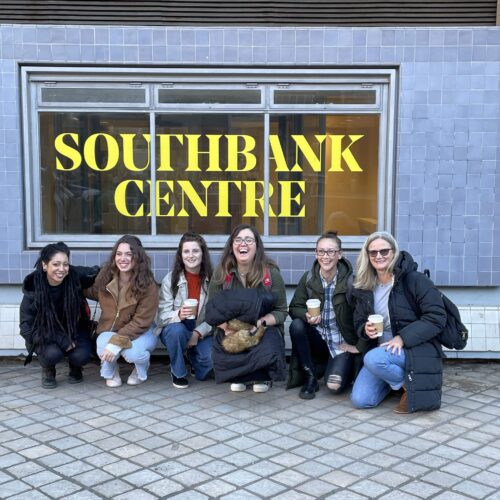
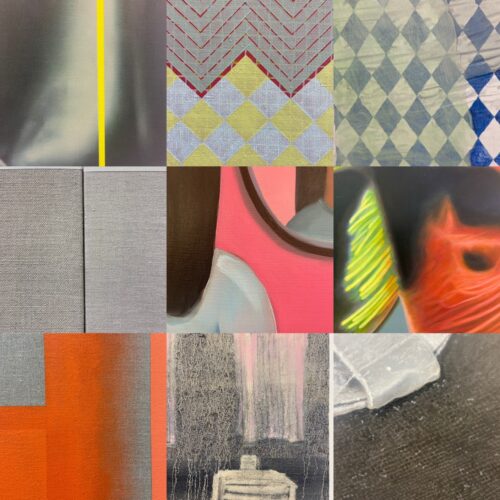
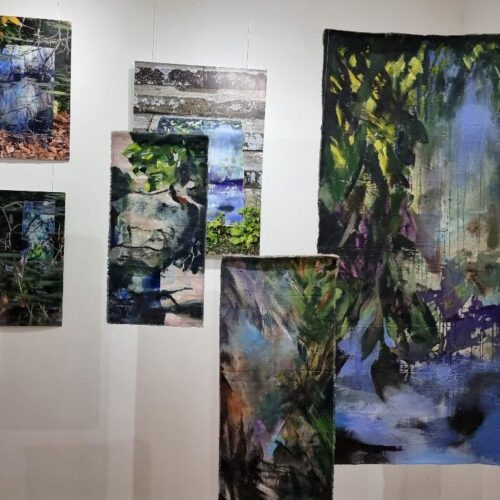
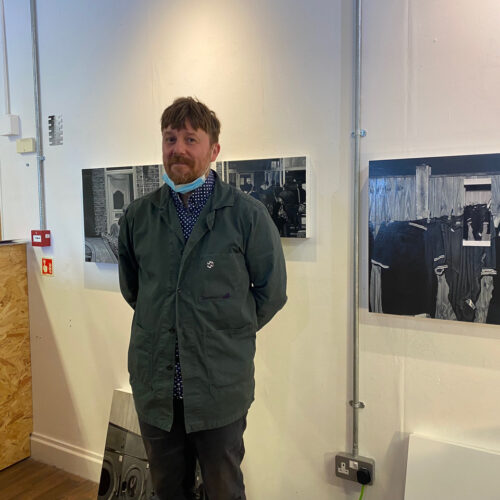
This trip to Portugal was wonderful. Being amongst other students & seeing how everyone responded to the environment with their sketchbooks and thoughts was so enriching. Thank you Michele and Diane and all the students for making this an unforgettable trip. We were so lucky to be able to do this before the virus took over…